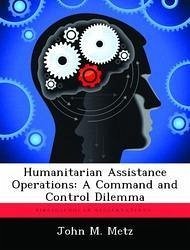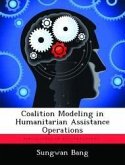This study examines the command and control issue that joint forces encounter during United Nations sponsored humanitarian assistance operations. By analyzing current doctrine for forming and operating joint task forces, the thesis offers insight into the organizational problems faced by joint planners and commanders. An investigation of current command and control theory illustrates the dilemma of building an organization that contains military structure while at the same time is flexible enough to adapt to its environmental changes. This environment, which includes a variety of governmental and non-governmental organizations, is shown as the critical element that the commander must consider when designing his force structure. The case studies of Operations PROVIDE COMFORT and SUPPORT HOPE illustrate joint and combined humanitarian assistance operations. The study concludes that disaster relief and humanitarian assistance operations force commanders into environments which require adjustments to traditional methods of command and control. The commander must develop an early understanding of what the military organization must accomplish and then structure it accordingly.
Hinweis: Dieser Artikel kann nur an eine deutsche Lieferadresse ausgeliefert werden.
Hinweis: Dieser Artikel kann nur an eine deutsche Lieferadresse ausgeliefert werden.








